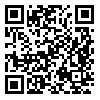Volume 15, Issue 5 (2024)
LRR 2024, 15(5): 35-56 |
Back to browse issues page
Download citation:
BibTeX | RIS | EndNote | Medlars | ProCite | Reference Manager | RefWorks
Send citation to:



BibTeX | RIS | EndNote | Medlars | ProCite | Reference Manager | RefWorks
Send citation to:
Dang A P, Nguyen D K. Students’ Perceptions of Learning EFL in The Combination of Face-to-Face and Online Teaching Environments. LRR 2024; 15 (5) :35-56
URL: http://lrr.modares.ac.ir/article-14-71809-en.html
URL: http://lrr.modares.ac.ir/article-14-71809-en.html
1- School of Foreign Languages, Can Tho University, Can Tho, Vietnam / Vietnam National University Ho Chi Minh City – Campus in Ben Tre, Ben Tre, Vietnam , danganhphuong2342@gmail.com
2- School of Foreign Languages, Can Tho University, Can Tho, Vietnam
2- School of Foreign Languages, Can Tho University, Can Tho, Vietnam
Abstract: (3701 Views)
The combination of face-to-face and online teaching, also called Blended learning (BL) has practically become one of the prevalent models of teaching and learning all over the world. Particularly, it has been applied as a new trend of using technology to concurrently combine in-class and out-of-class learning to optimize the educational impacts on students. However, BL is still quite a new learning model and has not been applied widely in teaching English in Vietnam. The current study was conducted to explore students’ perceptions of BL, the difficulties students think they have, and the percentage of face-to-face and online learning they prefer when learning in the BL environment. Sixty civil engineering students participating in the survey filled out a questionnaire after the forms of BL and the Learning Management System (LMS) Moodle had been introduced to them. The findings indicated that more than half of the participants were stimulated by BL and willing to take on the challenges. Nevertheless, some concerns about the lack of IT skills to fulfill the requirements of the BL course cannot be ignored.
Send email to the article author
| Rights and permissions | |
 |
This work is licensed under a Creative Commons Attribution-NonCommercial 4.0 International License. |









